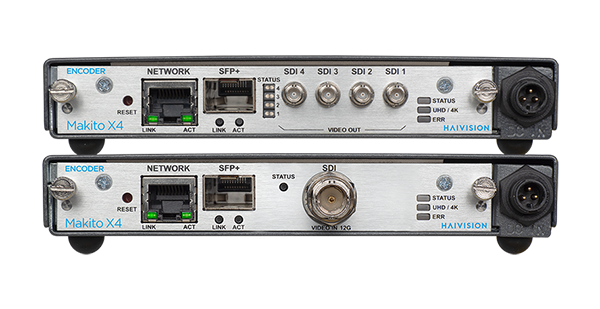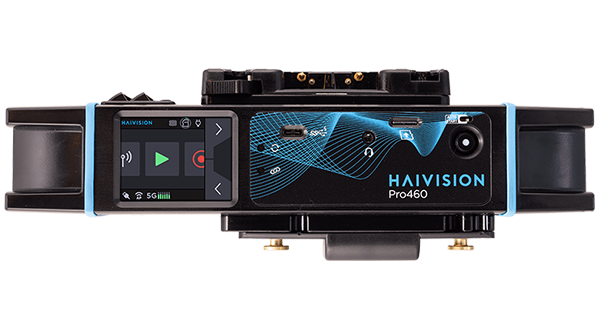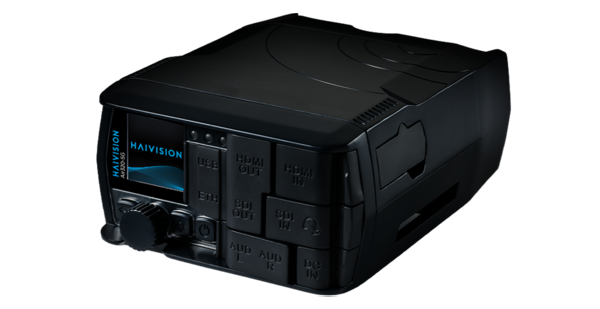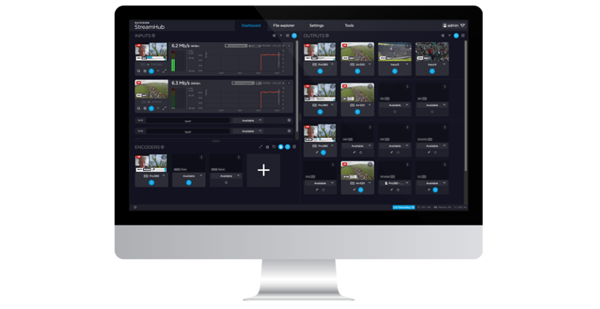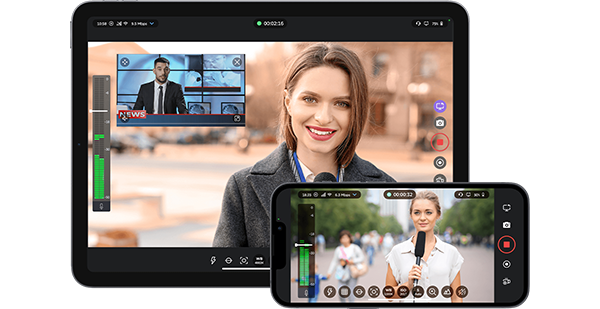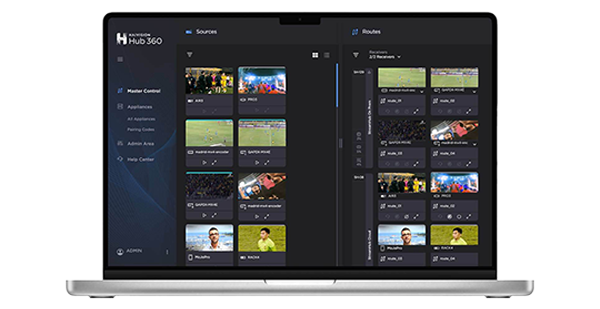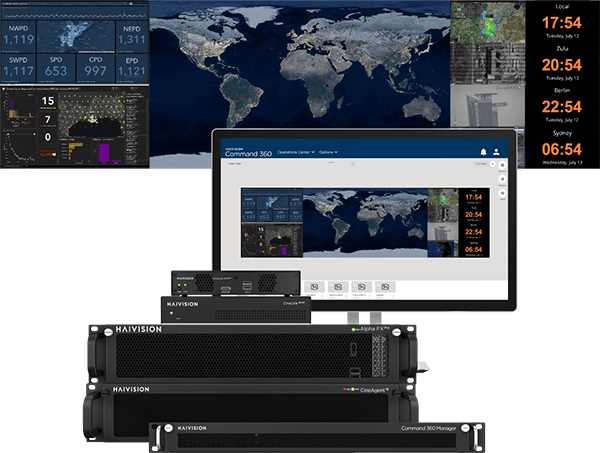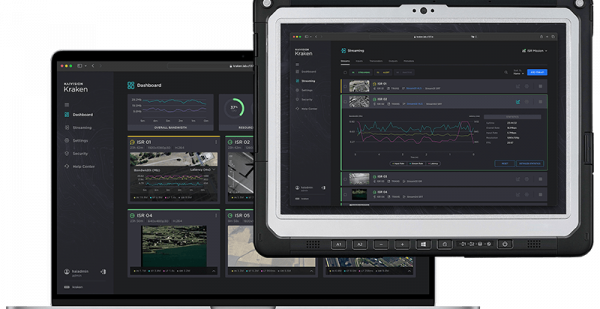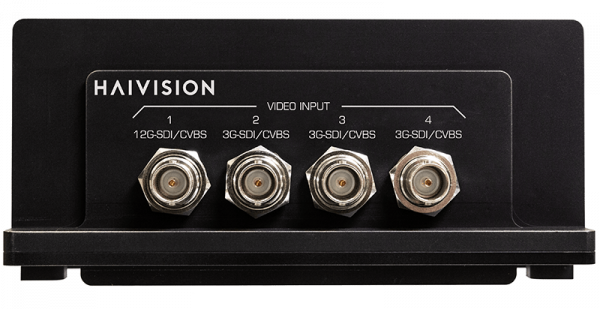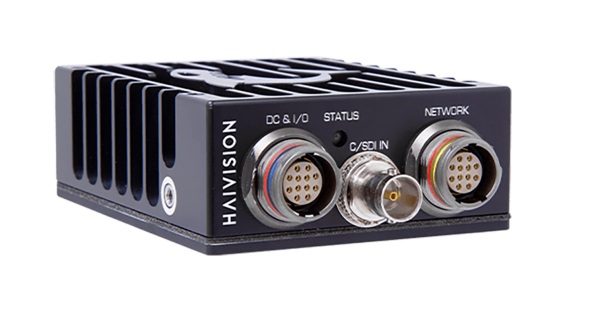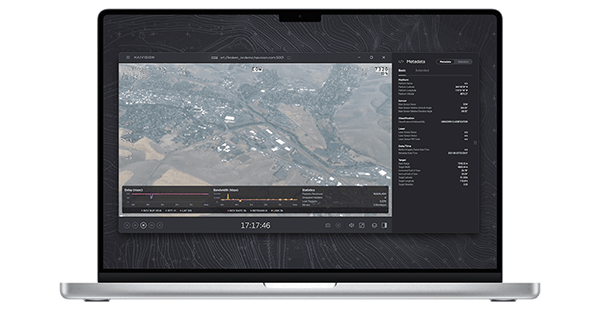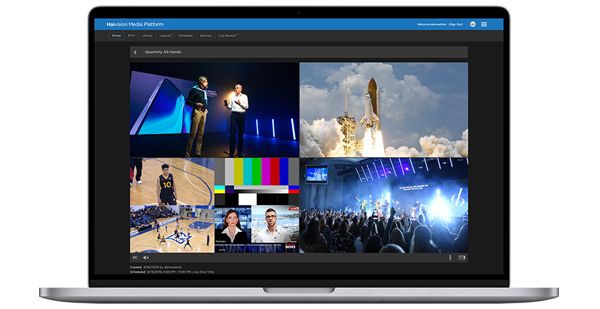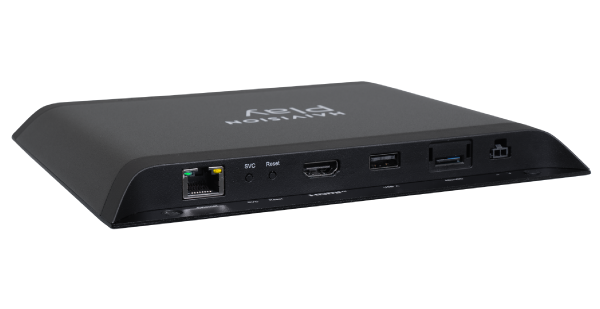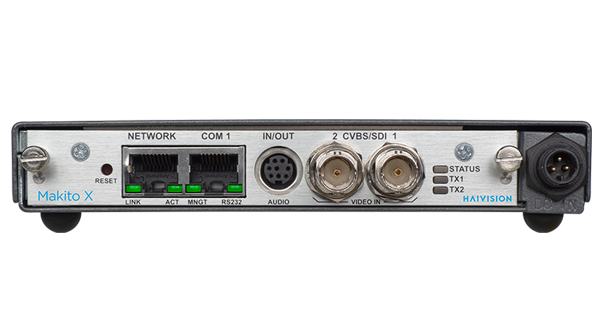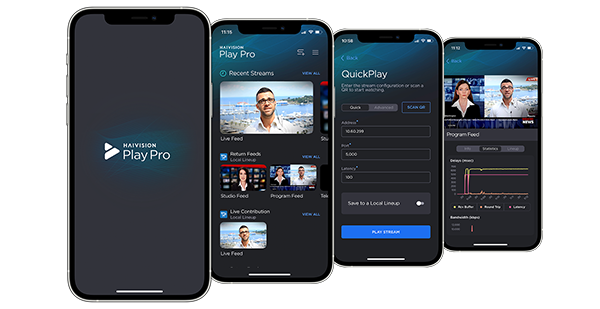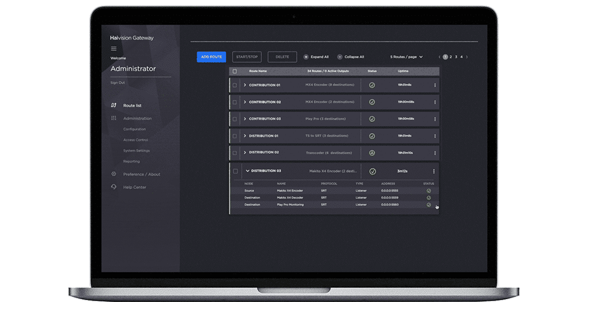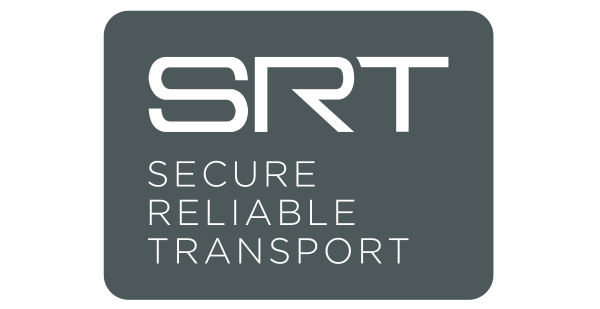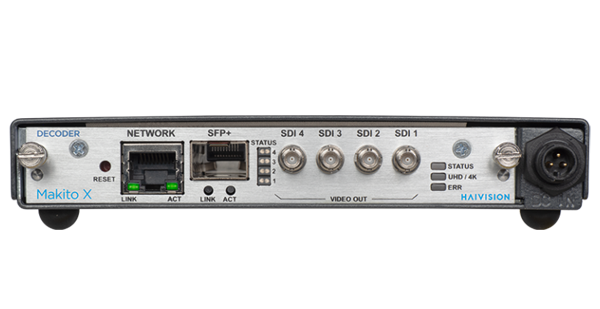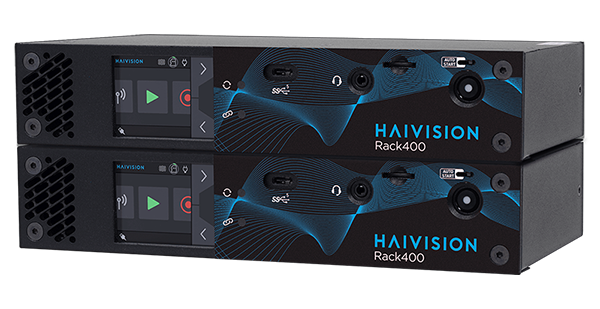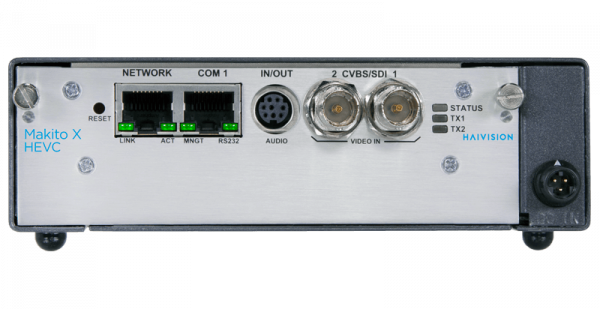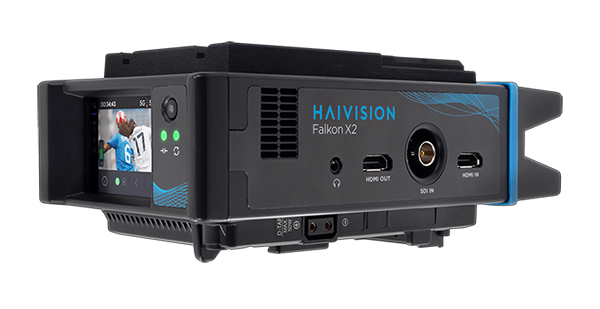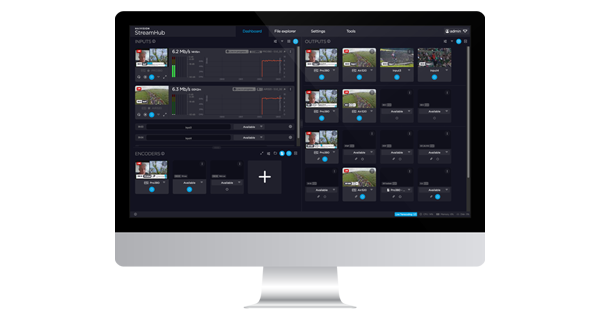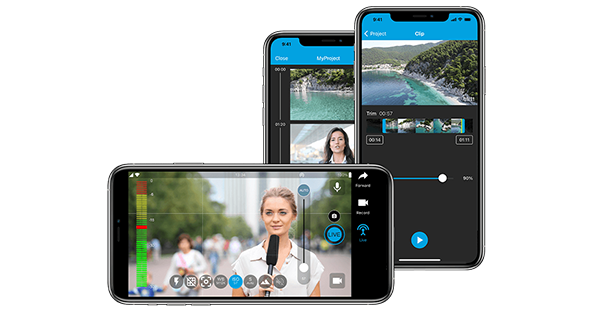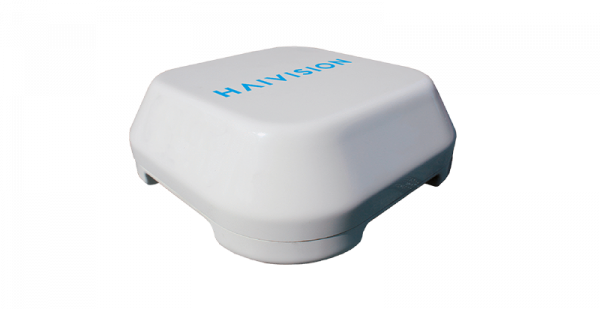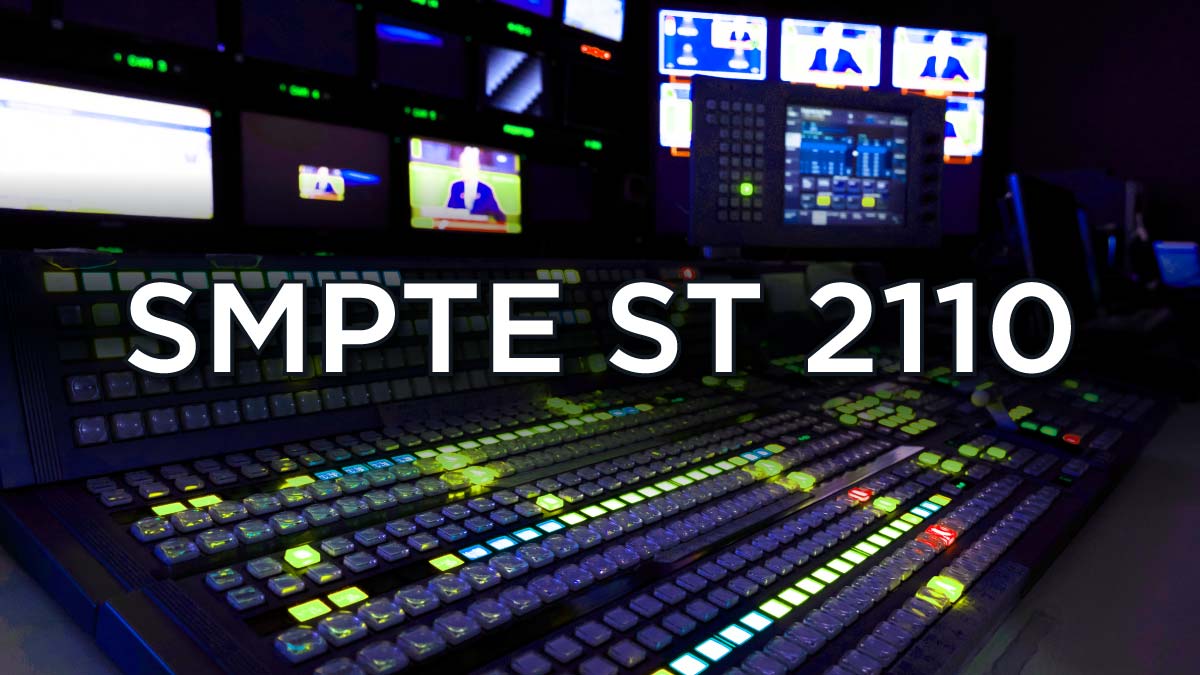In live broadcast production, transporting video and audio streams without delays is essential for delivering high-quality content to viewers. For a long time, the industry standard has been SDI, but as live production workflows continue to evolve, broadcasters have been relying more on IP-based solutions, like the Haivision Makito X4 video encoder, Haivision Pro460 mobile video transmitter, and Haivision StreamHub receiver, for contribution and distribution.
With this shift to IP-based workflows came the introduction of SMPTE ST 2110, which has enabled broadcasters to transmit uncompressed, high-quality media over local area networks based on IP and Ethernet technology.
In this post, we’ll take a closer look at what SMPTE 2110 is, why it’s important for IP-based workflows, and how you can use it with Haivision live contribution solutions to power your live broadcasts.
What is SMPTE ST 2110?
SMPTE ST 2110 is a suite of standards developed by the Society of Motion Picture and Television Engineers (SMPTE) for transporting video, audio, and metadata over IP networks in real time. Unlike with SDI workflows, SMPTE ST 2110 enables video, audio, and ancillary data to be transmitted separately over IP, allowing for more flexible, scalable, and efficient broadcast workflows.
Each piece of media can be processed by different production equipment while ending up at the same final destination, allowing for flexibility in live broadcast workflows. Synchronization technology called Precision Time Protocol (PTP) ensures accurate timing for media by enabling audio and video to stay in sync by aligning timestamps.
Networked Media Open Specifications (NMOS) is a set of open standards developed by the Advanced Media Workflow Association (AMWA) to simplify the deployment, management, and interoperability of IP-based media workflows based on SMPTE ST 2110. NMOS plays a crucial role in managing SMPTE ST 2110 workflows through device discovery, connection management, and stream routing.
Industry adoption
According to Haivision’s 2025 Broadcast Transformation Report, 51% of respondents say they use a hybrid video infrastructure that combines SDI, IP, and cloud technologies, showing an increase over the previous year’s 44%. When it comes to the adoption of SMPTE ST 2110, 37% said they leverage it for their IP and cloud infrastructure.
This shift by broadcasters illustrates a need to improve scalability and interoperability in IP-based environments. Live productions have begun leveraging SMPTE ST 2110 more, allowing outside broadcast (OB) trucks to manage video, audio, and metadata as separate IP streams, improving efficiency and integration with remote production workflows.
In addition to increased use in OB trucks, broadcast production facilities are also leveraging SMPTE ST 2110 for improved IP-based live production workflows and remote contribution. With these evolved workflows, broadcasters are turning to cutting edge technologies like the Haivision Makito X4 video encoder and Haivision Pro mobile video transmitter.
Powering live broadcasts with SMPTE ST 2110 and Haivision
Broadcast solutions like the Makito X4 can encode SMPTE ST 2110 video and audio and transport it over the internet using the Haivision-invented Secure Reliable Transport (SRT) protocol. This enables high-quality contribution feeds at low latency from OB trucks to remote production facilities, making SMPTE ST 2110 and SRT a powerful combination for live sports and event broadcasting.
Haivision Pro mobile video transmitters can transport video using Haivision’s Safe Streams Transport (SST) protocol over public and private mobile networks to Haivision StreamHub receivers which can distribute to SMPTE ST 2110 workflows via multi-camera synchronization.
This ecosystem of Haivision live broadcast contribution solutions is extremely versatile and supports SDI, NDI, and SMPTE ST 2110 broadcast production workflows, providing users with unmatched flexibility and interoperability. By powering workflows with SMPTE ST 2110 for IP transport, NMOS for device discovery and stream management, and powerful contribution solutions and technology from Haivision, production facilities can achieve greater flexibility, scalability, and reliability for their live broadcasts.

